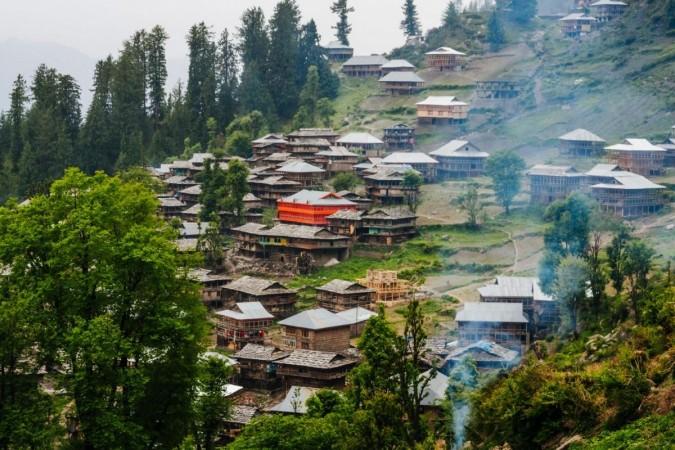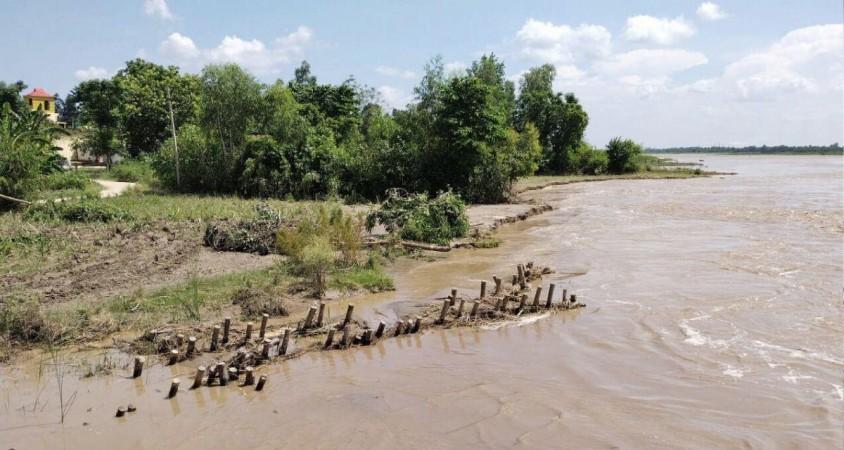
The monsoon season has unleashed a wave of destruction in Himachal Pradesh, with relentless downpours triggering landslides and flash floods. Rescue operations have resumed in a desperate attempt to locate 49 missing individuals. The operation, which recommenced on Friday, August 2, is a testament to the resilience and determination of the rescue teams amidst the ongoing crisis.
The torrential rain has caused severe flooding, resulting in the destruction of six bridges, 20 houses, and six shops. The devastation has already claimed four lives, and the death toll is feared to rise as the chances of survival for the missing individuals diminish with each passing hour.
The situation is particularly grim in Shimla district, where a flash flood swept away 33 people and 20 houses in Samej village. The village, located near a hydropower project in Jhakri, Rampur tehsil, and on the border of Kullu district, has been left completely ravaged.

The state government has been actively involved in managing the crisis. A spokesperson for the state government revealed that Chief Minister Sukhvinder Singh Sukhu would be visiting the Rampur area to assess the damage caused by the cloudburst. The Chief Minister's visit, however, was delayed due to the inclement weather conditions that prevented his helicopter from taking flight. As a result, he decided to travel to Rampur by road.
The rescue operation is being led by teams from the National Disaster Response Force (NDRF), the Indo-Tibetan Border Police (ITBP), and the Home Guard. Shimla Deputy Commissioner Anupam Kashyap has been monitoring the rescue operation at the spot. The rescuers had to trek for two hours to reach the disaster-hit village after the link road was washed away, highlighting the challenging conditions they are operating under.
The destruction caused by the floods extends beyond residential areas. A multi-storey building of a primary health centre and a primary school building have also been washed away, further exacerbating the crisis. The loss of these essential community structures will have long-term implications on the health and education of the local population.

This disaster is reminiscent of the 2013 North India floods, which were also triggered by heavy monsoon rains. The floods, considered the country's worst natural disaster since the 2004 tsunami, resulted in the death of approximately 5,700 people. The current situation in Himachal Pradesh underscores the urgent need for effective disaster management strategies to mitigate the impact of such calamities.
The ongoing rescue operation in Himachal Pradesh is a stark reminder of the devastating impact of climate change and the urgent need for sustainable development practices. As the state grapples with the aftermath of the disaster, the focus is on providing immediate relief to the affected communities and rebuilding the ravaged areas. The resilience and determination of the rescue teams, coupled with the support from the state government, offer a glimmer of hope amidst the devastation.
In conclusion, the monsoon mayhem in Himachal Pradesh has resulted in a significant loss of life and property. The ongoing rescue operation, led by the NDRF, ITBP, and the Home Guard, is a testament to the resilience and determination of the rescue teams. The state government, under the leadership of Chief Minister Sukhvinder Singh Sukhu, is actively involved in managing the crisis. The current situation underscores the urgent need for effective disaster management strategies to mitigate the impact of such calamities. As the state grapples with the aftermath of the disaster, the focus is on providing immediate relief to the affected communities and rebuilding the ravaged areas. The resilience and determination of the rescue teams, coupled with the support from the state government, offer a glimmer of hope amidst the devastation.














